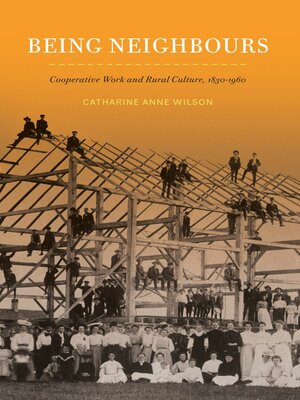Being Neighbours
ebook ∣ Cooperative Work and Rural Culture, 1830–1960 · McGill-Queen's Rural, Wildland, and Resource Studies
By Catharine Anne Wilson

Sign up to save your library
With an OverDrive account, you can save your favorite libraries for at-a-glance information about availability. Find out more about OverDrive accounts.
Find this title in Libby, the library reading app by OverDrive.



Search for a digital library with this title
Title found at these libraries:
| Library Name | Distance |
|---|---|
| Loading... |
Throughout history, farm families have shared work and equipment with their neighbours to complete labour-intensive, time-sensitive, and time-consuming tasks. They benefitted materially and socially from these voluntary, flexible, loosely structured networks of reciprocal assistance, making neighbourliness a vital but overlooked aspect of agricultural change.
Being Neighbours takes us into the heart of neighbourhood – the set of people near and surrounding the family – through an examination of work bees in southern Ontario from 1830 to 1960. The bee was a special event where people gathered to work on a neighbour's farm like bees in a hive for a wide variety of purposes, including barn raising, logging, threshing, quilting, turkey plucking, and apple paring. Drawing on the diaries of over one hundred men and women, Catharine Wilson takes readers into families' daily lives, the intricacies of their labour exchange, and their workways, feasts, and hospitality. Through the prism of the bee and a close reading of the diaries, she uncovers the subtle social politics of mutual dependency, the expectations neighbours had of each other, and their ways of managing conflict and crisis. This book adds to the literature on cooperative work that focuses on evaluating its economic efficiency and complicates histories of capitalism that place communal values at odds with market orientation.
Beautifully written, engaging, and richly detailed and illustrated, Being Neighbours reveals the visceral textures of rural life.







